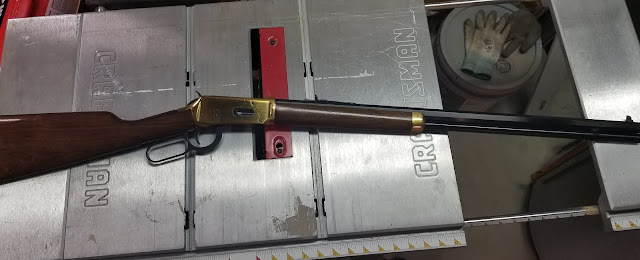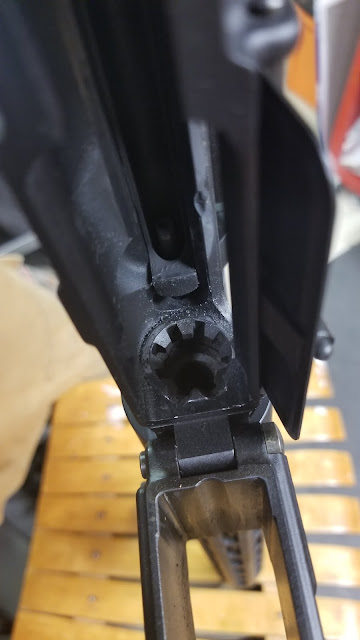The Winchester Repeating RIfle
Introduction
The Winchester Model 1866 was Winchester's first lever-action, repeating rifle. Originally chambered in .44 Henry rimfire, the Winchester rifle went through many iterations, with caliber options ranging from small rimfire cartridges all the way up to .45-70 or 7.62x54R. For their time, lever action repeating rifles were a huge amount of firepower held by a single person. The Model of 1873 was so prolific and successful, that it was marketed as The Gun that Won the West.
Technical Details
Because of the numerous different models of Winchester repeaters and their different technical details, I'm going to focus on the technical details of the model of rifle that I have access to, the Model 1894. The 1894 was actually the first rifle to be released onto the civilian market to be chambered in a smokeless powder cartridge, the .30-30.
Because of the higher pressures that come with smokeless powder, the action of the 1894 had to be built strong, along the lines of the 1886 pattern. This strength came in the form of a large locking block in the rear on the 1894's receiver. The smokeless powder, .30-30 cartridge allowed the 1894 to become the quintessential North American hunter's rifle. The .30-30 cartridge has similar ballistic performance to 7.62x39, so that power in 1894 was significant.
One of the most characteristic features of Winchester lever-action rifles is their side loading gate. This was very innovative for its time, as it allowed the shooter to reload or top-off their rifle quickly, without needing to remove a magazine tube or load from the front of the rifle. This feature was implemented on the Model 1866, and lasted all the way until the Model 1895, which used a box magazine.
One of the interesting remnants of the old-west history of lever-action rifles in general is the inclusion of a saddle ring as an option. Saddle rings were used with a sling tied to a saddle while on horseback, and allowed the user to retain the rifle should it be dropped. Typically there was also a scabbard for the rifle to be placed in while not in use.
History and Use
The Winchester repeating rifle was the rifle of the Wild West. Famously, it was used by both sides of the American Indian Wars in the late 19th century,.
 |
| Geronimo and his warriors with various rifles. Note the two repeaters on the left. |
Famously, repeating rifles were used to great effect against George Custer at Little Big Horn. Many of the Native Americans were armed with various Henry or Winchester repeating rifles, while Custer and his men were mostly armed with dated, single-shot .45-70 Springfields. This effectively allowed the Native Americans to out-gun the forces of the US military in this instance, a feat thanks in no small amount, to the repeating rifle. Winchester repeating rifles went on to serve all the way up until WWI, with Russia buying large numbers or 1895 Winchesters chambered in 7.62x54R.
 |
| Credit: https://www.gunsandammo.com/editorial/russias-winchester-model-1895/250597 |
Because the Russians were desperate for rifles, and Winchester was desperate to sell rifles, a deal was struck for Winchester to make modified Model 1895 rifles for the Russian military. The most obvious addition was a stripper-clip guide on top to fit standard Mosin-Nagant clips.
Conclusion
The various models of Winchester repeating rifle resonate a uniquely American aura. Images of a Winchester lever-action draw up images of the wild west and the frontier. The role that the rifle has played in American history is often overlooked, but even people that don't know much about guns think of cowboys when they see a lever action.





Comments
Post a Comment